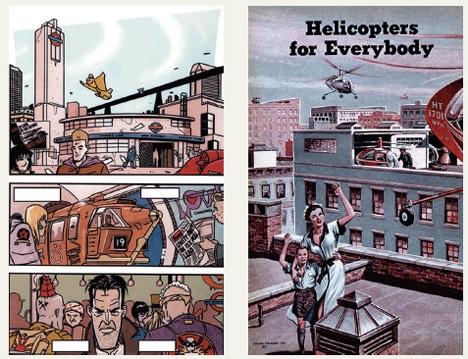Designers make sense of London’s changing transport
The London Transport Museum has enlisted a host of designers to work alongside its in-house team for the Sense and the City exhibition, which opens next month.

Sense and the City: Smart, Connected and on the Move runs from 1 July to 18 March 2012 and will explore how emerging technologies are changing the way we access and experience London and compare this with past visions of the future. Exhibition content has been provided by contributors including students at the Royal College of Art, while independent designers Fraser Hall, Andy Horn and Ben James have worked with the in-house team.
London Transport Museum head of design Andy Spencer says the exhibition ’will be a lot more interactive than our previous ones’ and will use technologies including touchscreen, AV and projection.
An interactive table will look at eight transport topics through ’movies, animations and talking heads’, says Spencer. Topics will include a cashless society, driverless cars, reactive buildings and augmented reality.
Exhibition curator Stephen Feber says the exhibition will feature a range of design commissions. Some of the designers have approached London Transport Museum through Senseable City Lab, a research institute based at the Massachusetts Institute of Technology in the US, which Feber says ’has a long interest in mapping cities and seeing how people within cities operate’.
Nine student projects from the RCA will be showcased. One, by Portuguese student Sergio Camiera, proposes a flexible skin covering buses as an addressable surface.
’It will carry real-time information such as travel updates and when it approaches destinations like the British Museum, it can become like a chameleon maybe showing vases from the museum,’ Feber says.
RCA student Alice Moloney has developed a ’microsignage scheme’ based on a system she found in a Greek village where there are no municipal signs. ’People draw and personalise their own,’ says Feber.
Moloney is developing a democratic system based on this called Discover Your Borough that may be trialled in Hackney, working with local people to create their own iconography to build a signage system, says Feber.
Oliver O’Brien of University College London’s Centre for Advanced Spatial Analysis specialises in ’new urban geographies and transport visualisations’, says Feber.
O’Brien’s visualisation looks at the Barclays Cycle Hire scheme through ’geolocated data’ recorded when bikes are locked. This has allowed O’Brien to show hot spots of use and the shortest path between two points.
Feber has commissioned designer Jeremy Wood to work up a ’GPS writing project for London’. The brief is still being finalised.
Other exhibits at the show
- Installations of the Sinclair C5 and Ryno vehicles
- Images of ’past-future’ visions including work by architects Le Corbusier and Archigram
- A ’striking futuristic vision’ by artist Syd Meads
-
Post a comment



